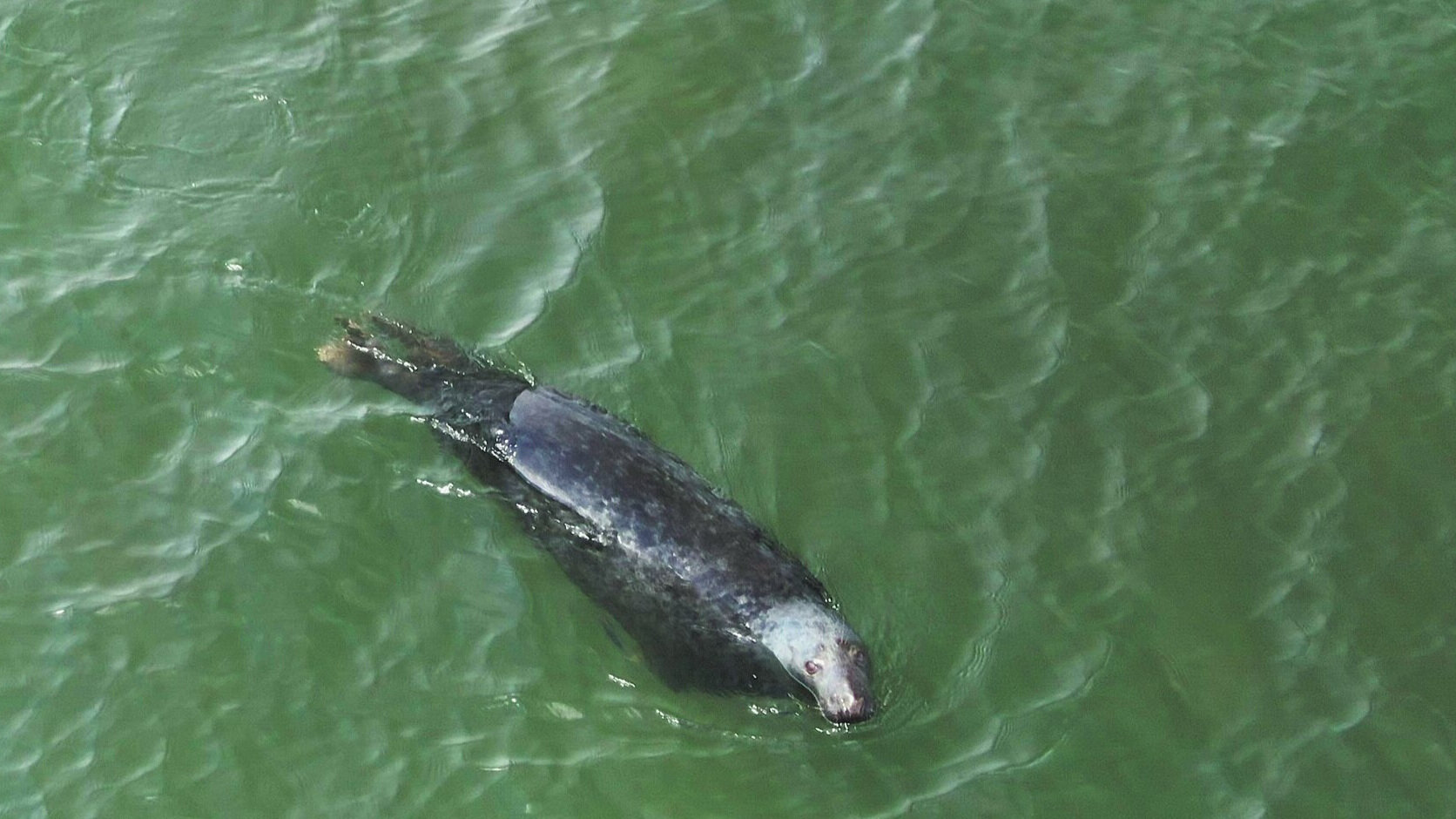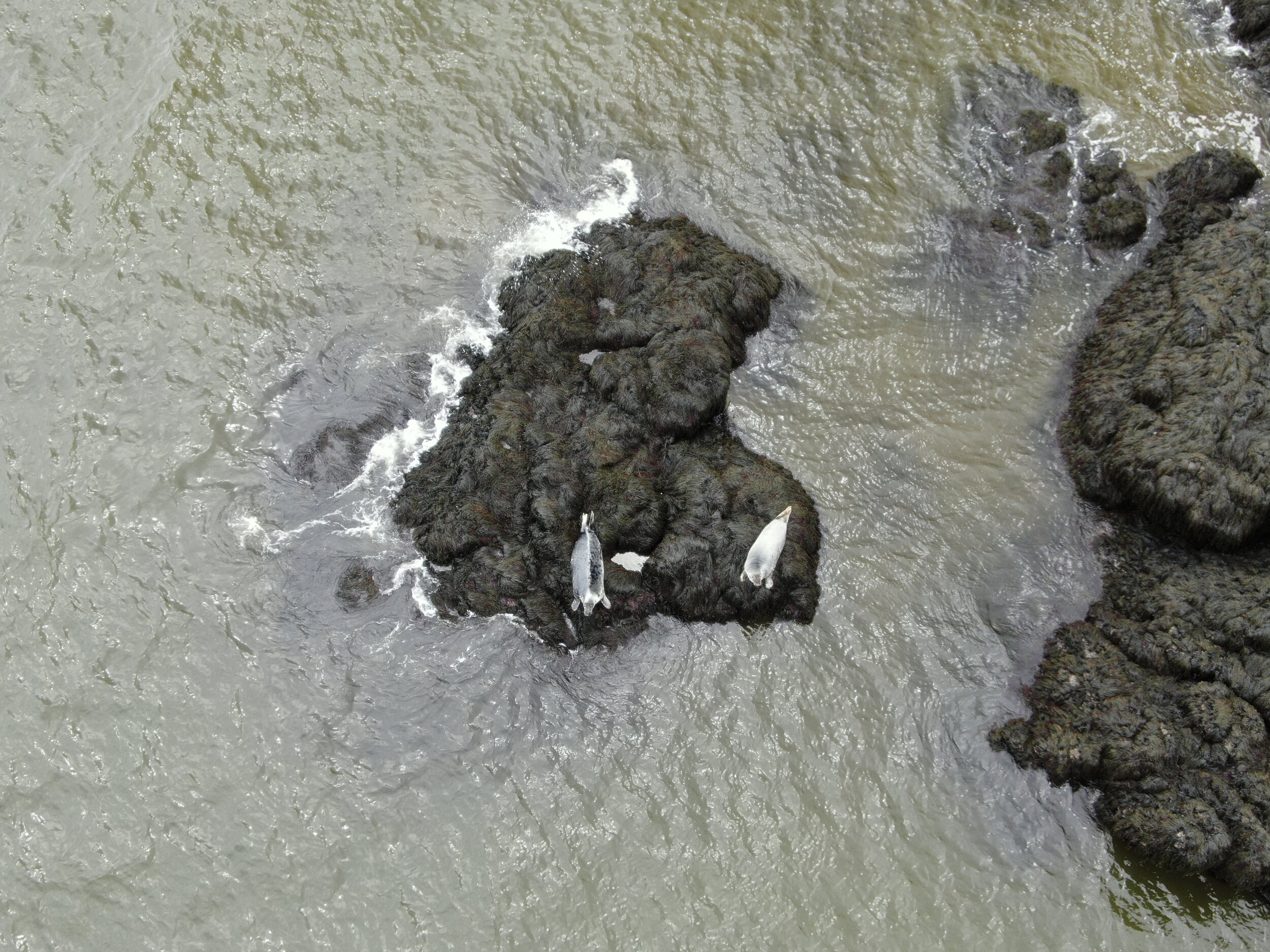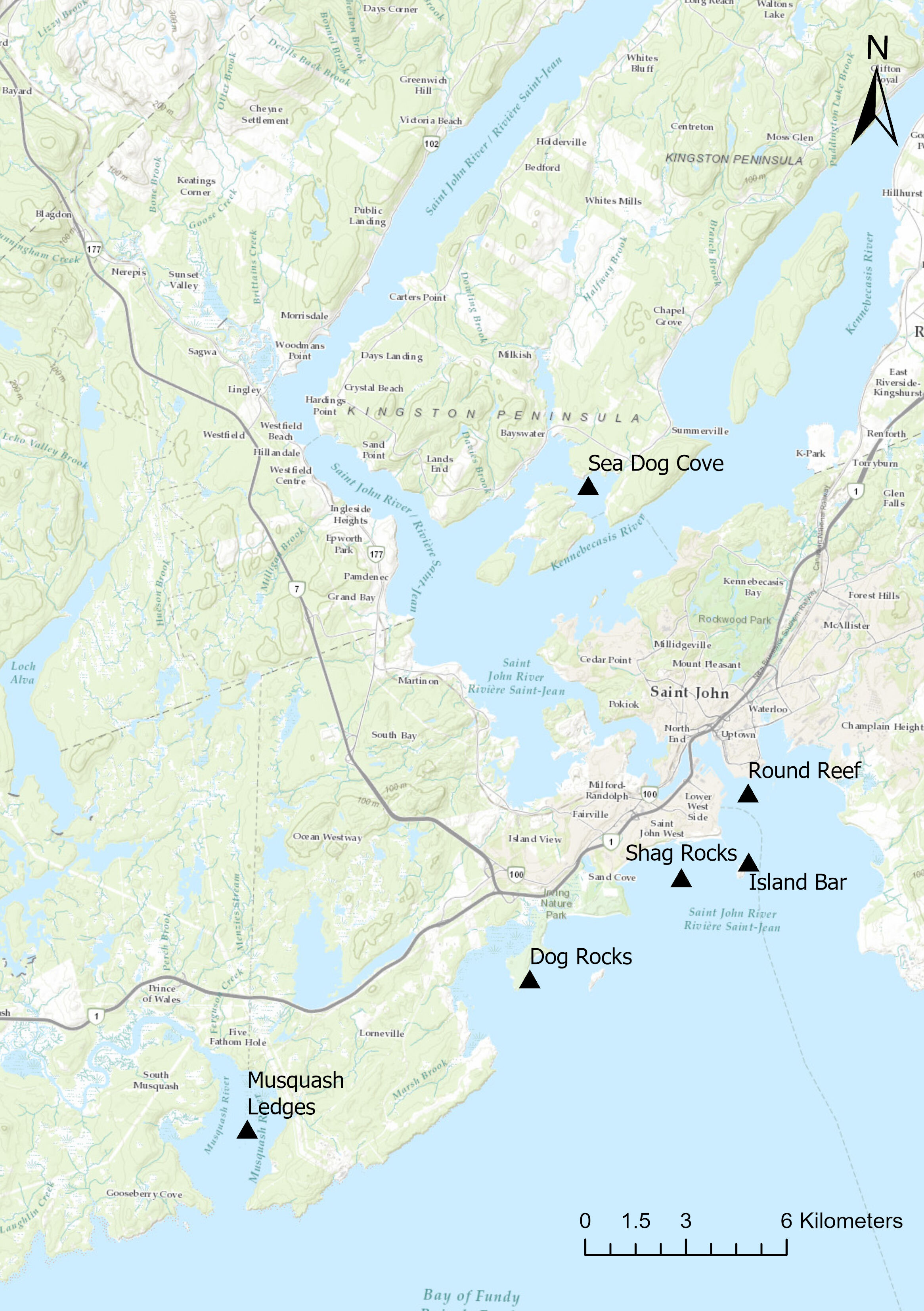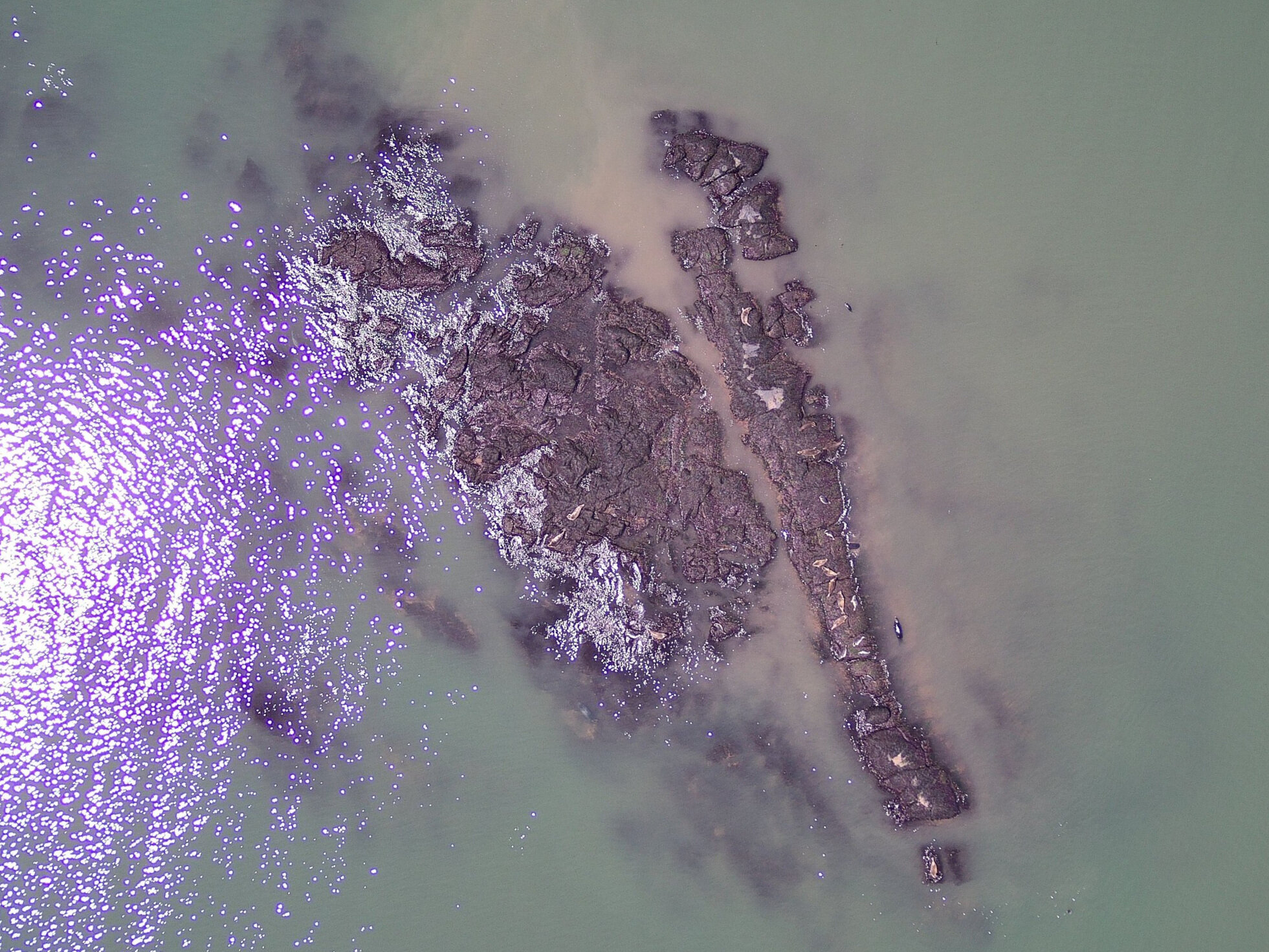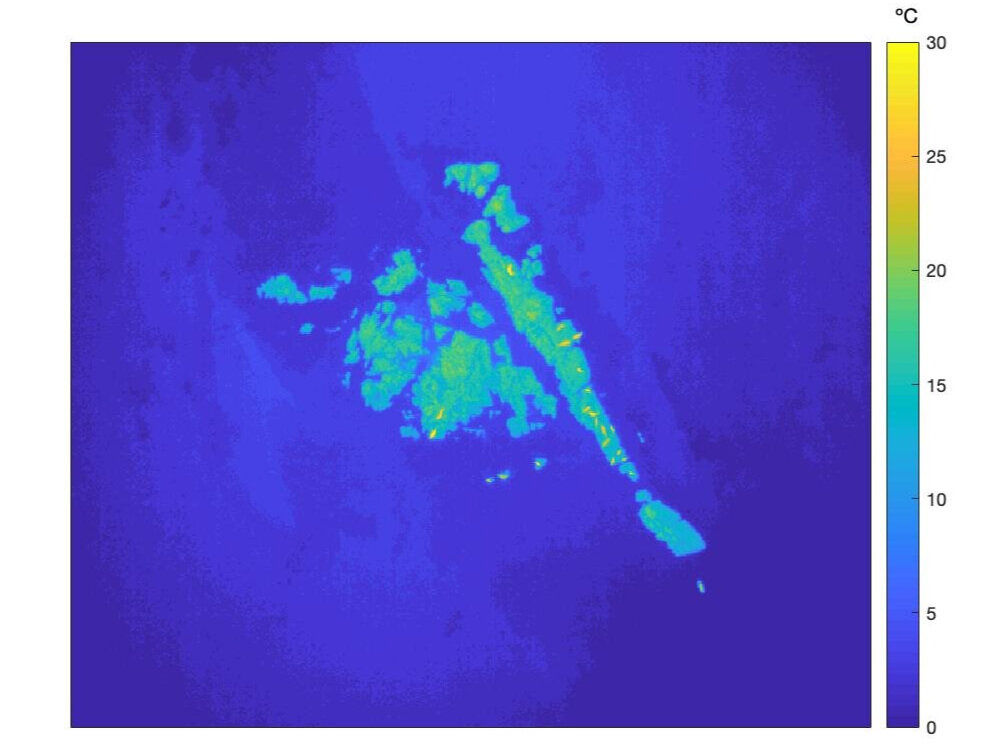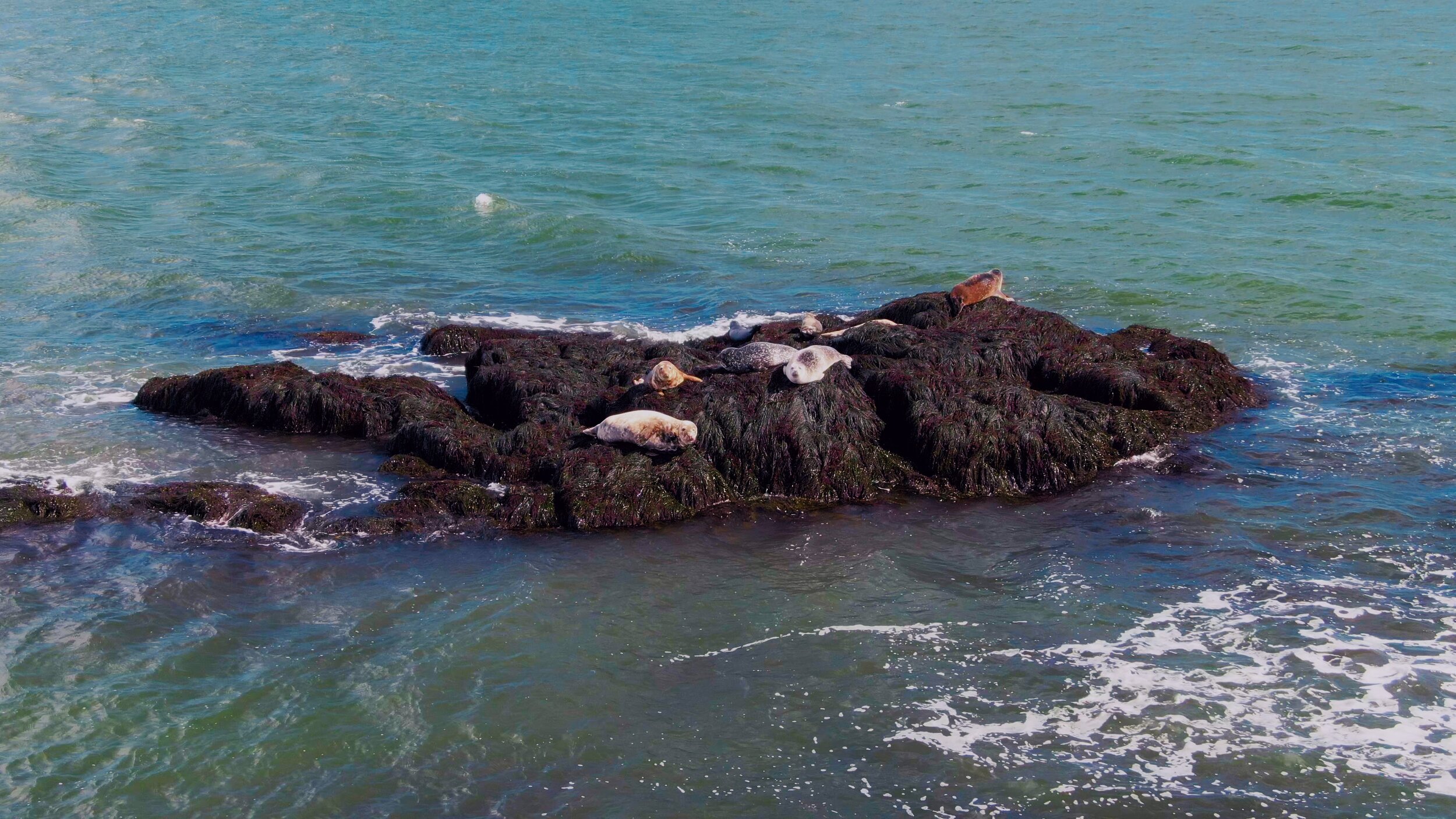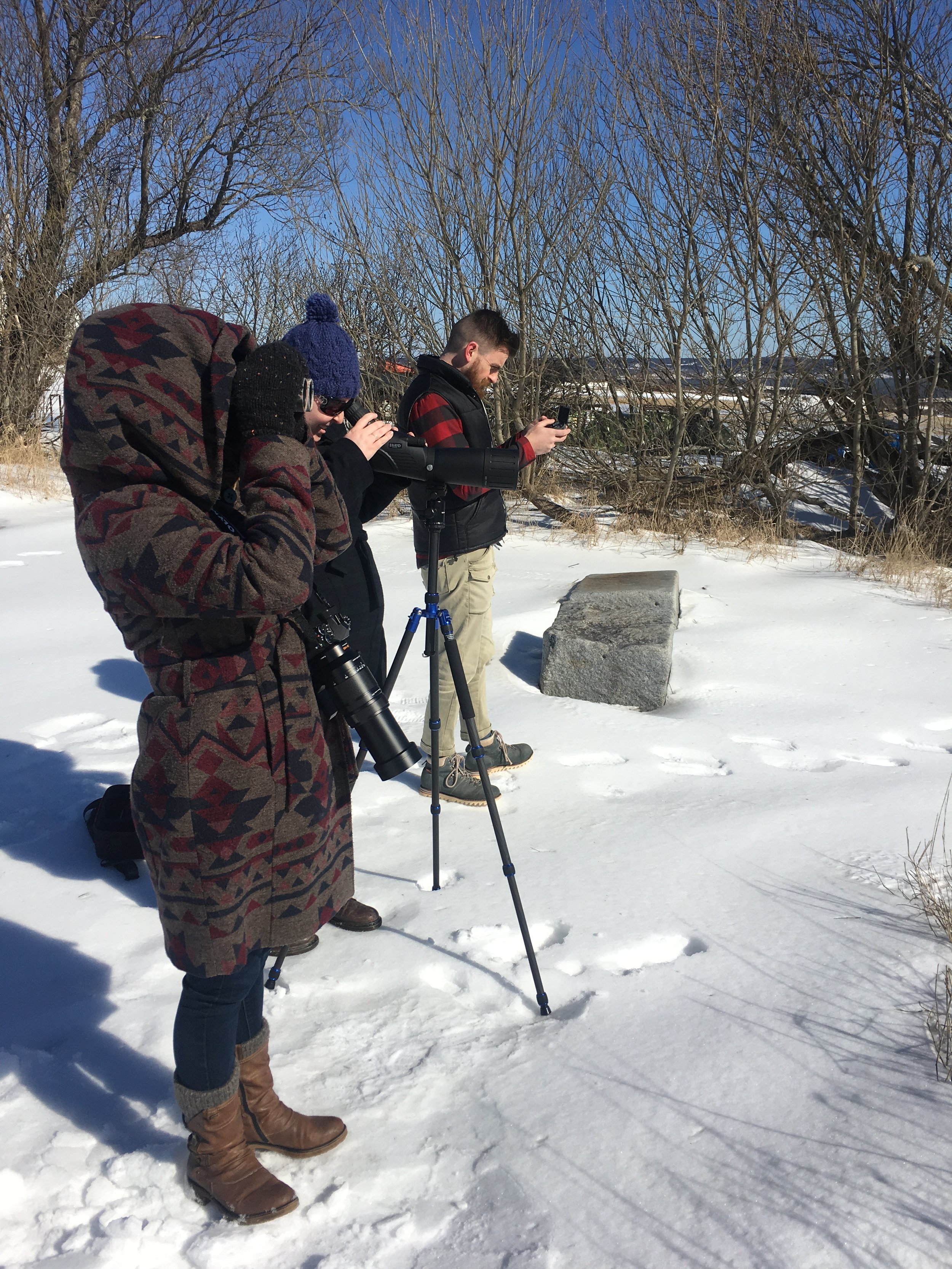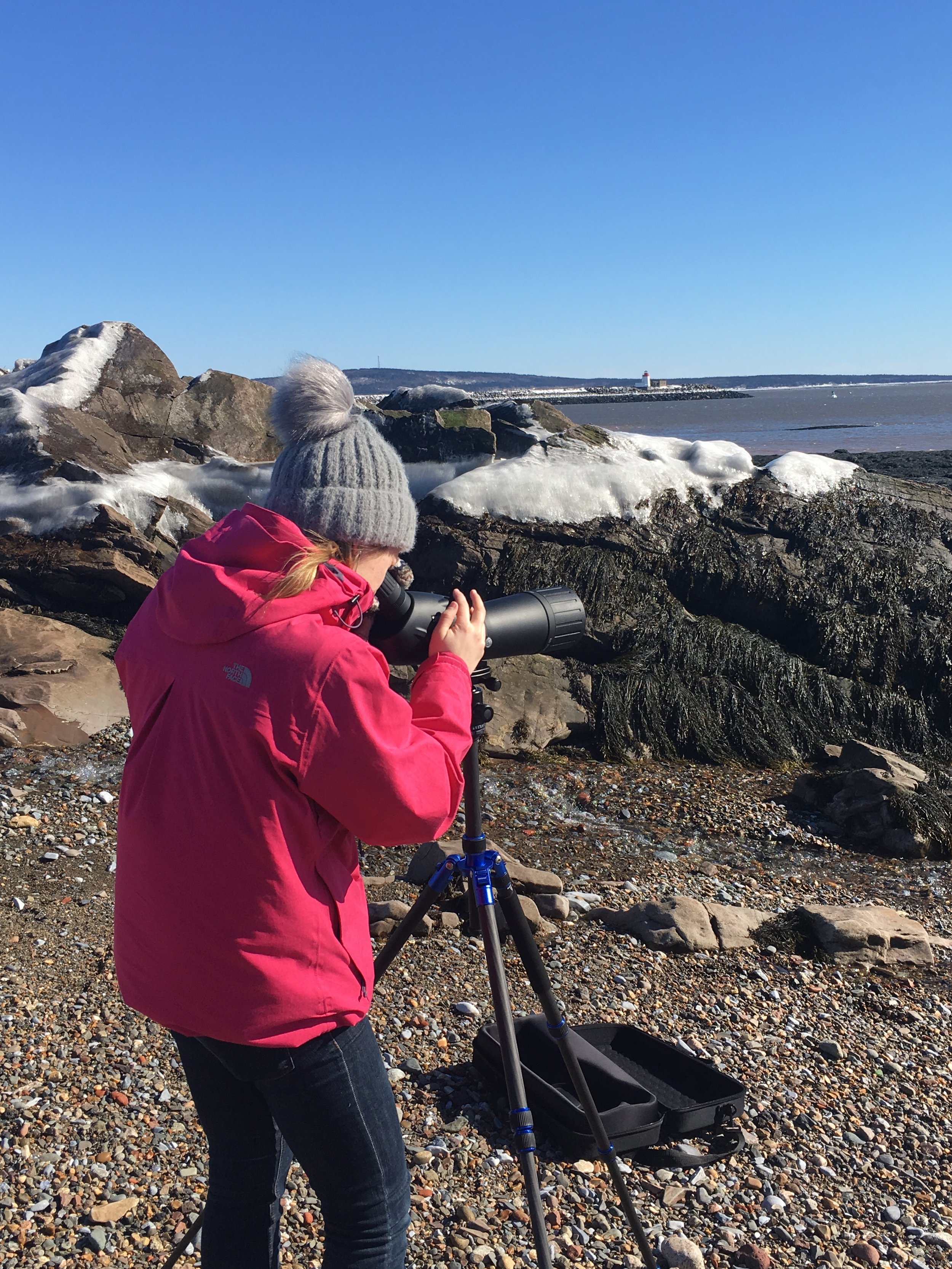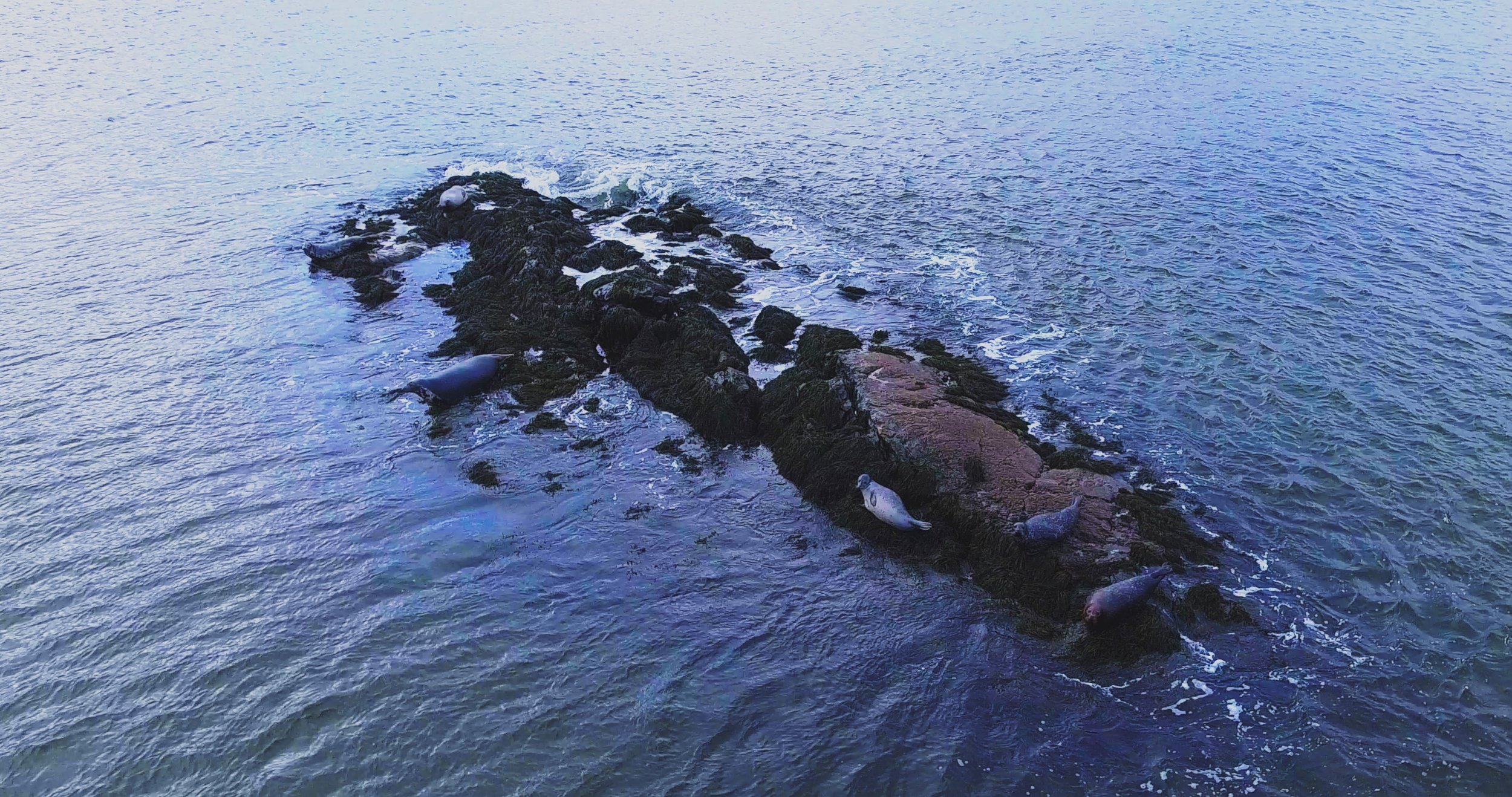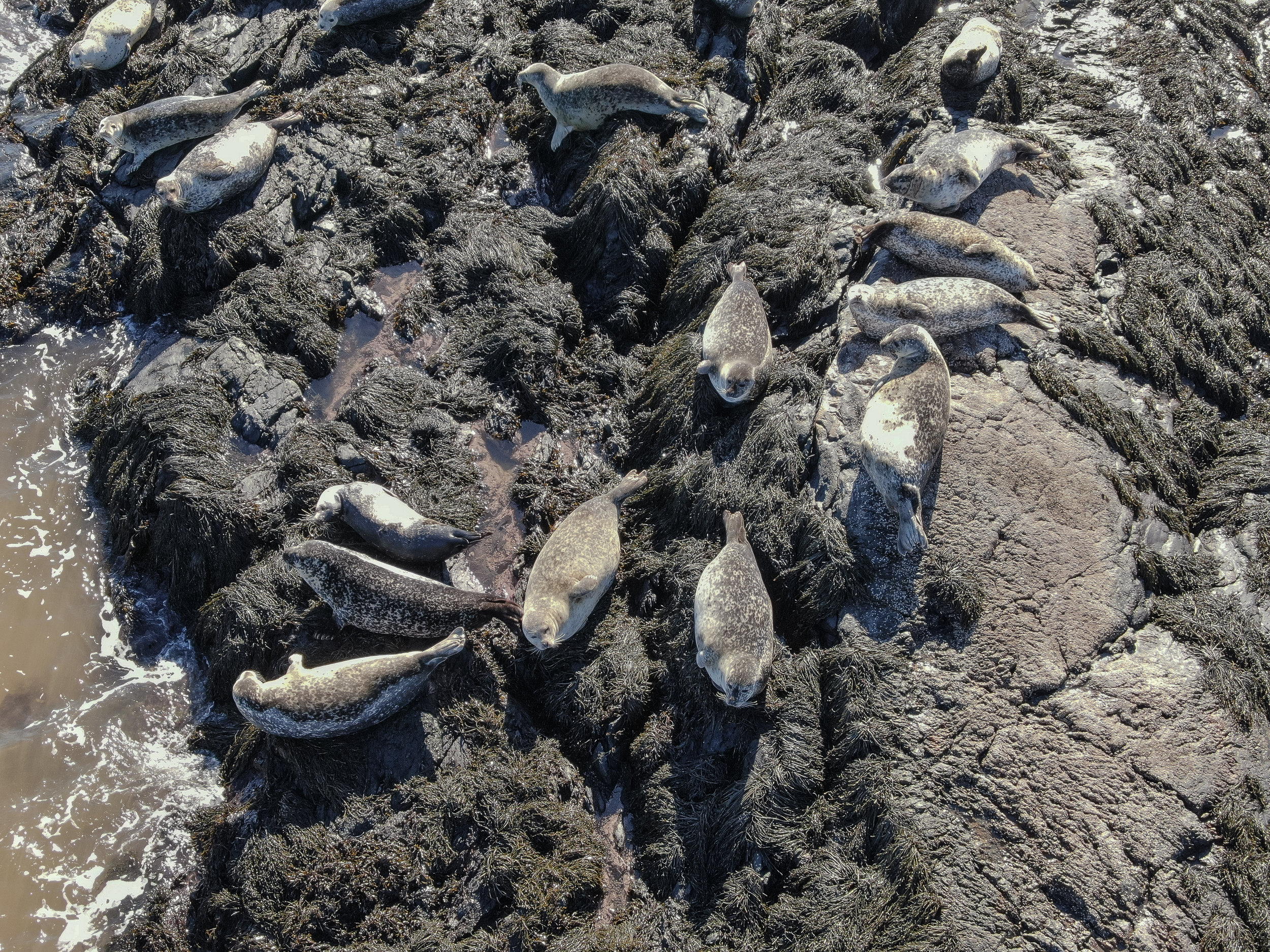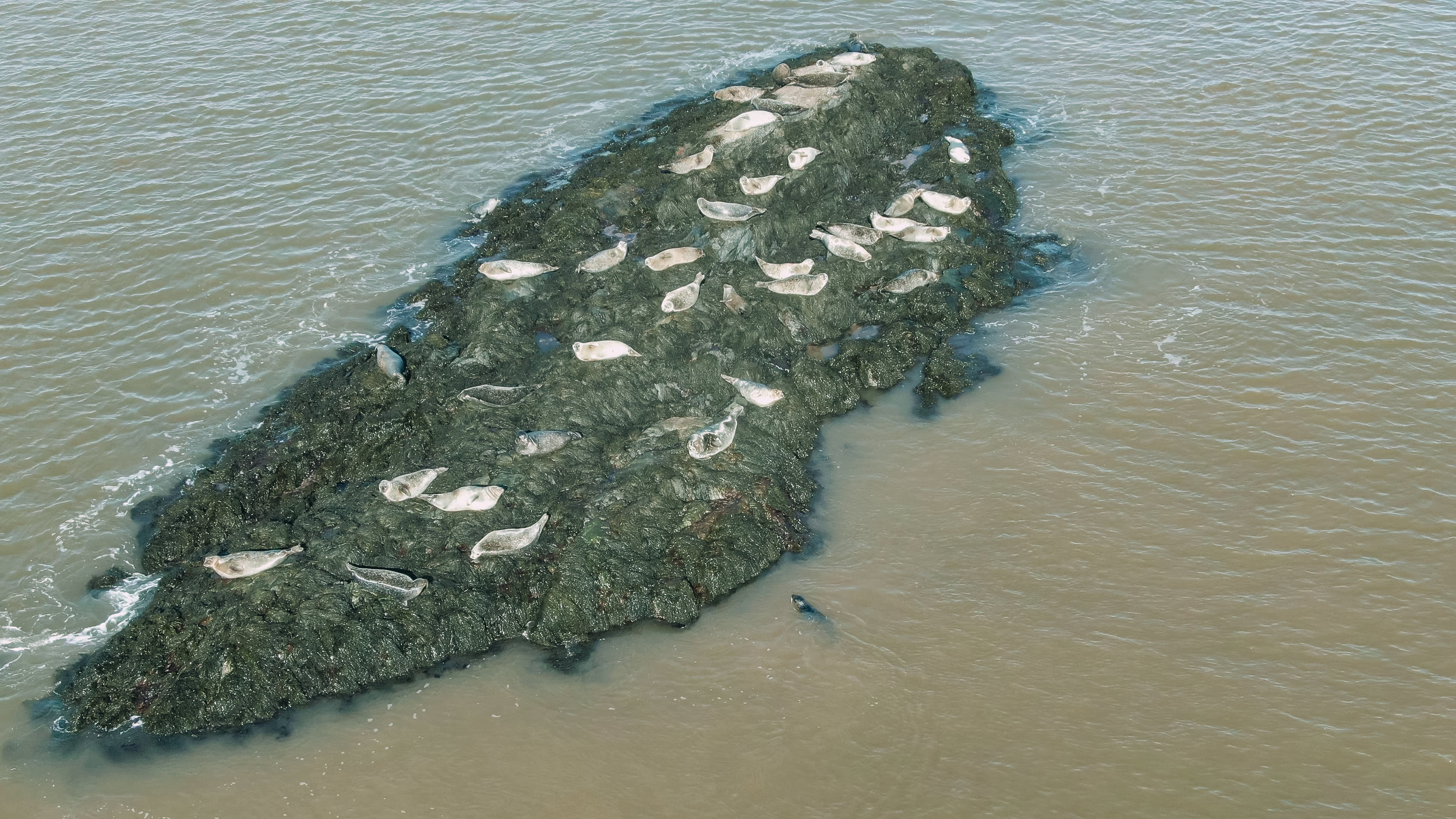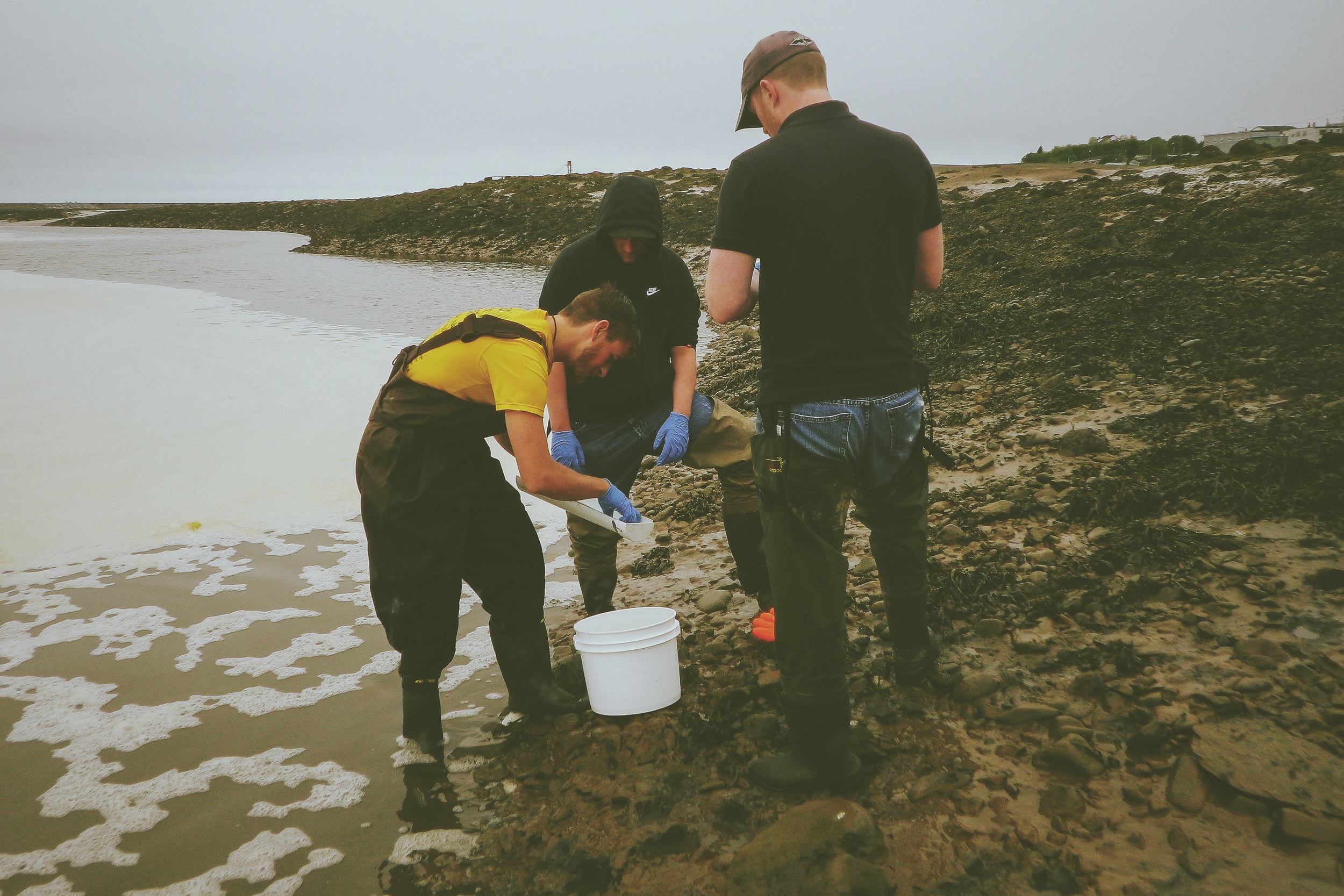
STAFF BLOG
Saint John Sea(l) Dogs
Did You Know?
Did you know that ACAP Saint John has been working on a project observing Harbour seal populations in the Saint John Harbour? This 3-year project (funded by DFO’s Coastal Environmental Baseline Program) involves counting seals as they haul out on rocks at low tide on a biweekly basis. Over time, we are hoping to collect enough data to determine the population numbers of seals in our region and compare it to similar studies that were conducted in the 1990s.
We have six sites that we visit: five sites that are located in the Saint John Harbour and one site located along the Wolastoq [St. John River] (Sea Dog Cove, Summerville). Our observations are conducted every two weeks when the low tide is in the afternoon. Using spotting scopes, binoculars, and (occasionally) drones, we count and record the number of seals that are seen hauled out on the rocks and swimming nearby. Since seals do not migrate south for the winter, we are able to continue with observations throughout the winter (with the exception of the river site since it does freeze).
Map of harbour seal haul out site locations throughout the Saint John Harbour.
Results (so far)
Overall, we’ve been very successful with our sightings. As expected, most sites have more seals in the spring compared to other seasons, likely due to April-June being their mating/pupping season. It was also observed that during the winter months there is a number of seals that haul out at Dog Rocks (along the Irving Nature Park). Since seals don’t necessarily long-distance migrate during the winter, perhaps they move between the different haul out sites throughout the seasons.
Number of seals observed at all haul out sites (excluding Round Reef) from Dec ‘18 - Nov ‘20.
We are very fortunate to have a landowner near the Sea Dog Cove site that completes our freshwater observations for us. She noticed that the seals don’t haul out during the day based on the tides, but based on the time of day. She is more likely to see seals during sunrise and sunset.
Historically there have been sightings of seals on Round Reef (just off Tin Can Beach) and that’s why it was added as an observation site. However, no seals have been observed at this site as of yet! Perhaps they’ve found a better place to sunbathe.
What’s New?
This past summer we teamed up with Gina Lonati, a PhD student from UNBSJ, who is currently studying the health of North Atlantic Right Whale using drones. Gina is helping us by flying her drone over the haul out sites to achieve a more accurate count of the seals. Her fancy drone can also take thermal images of the seals - check it out!
(left): image of seals hauled out at low tide; (right): thermal image of seals hauled out oat low tide. Yellow = hot, blue = cold
What’s Next?
ACAP will continue to collect data for another year. Although it is still too early to make any conclusive results, collecting this data will contribute to filling up data gaps in our region.
CITIZEN SCIENCE
Have you seen any harbour seals lately? We’re interested in hearing from you! If you see any seals at all during your travels, whether they are swimming along the river or hauled out on some rocks, let us know! You can fill out a Seal Sighting Submission Form and let us know how many seals you saw and roughly where you spotted them. This data collected will help us determine the population of seals here in the Saint John Harbour.
Seal of Approval
It’s not uncommon for Saint Johners to see seals during their travels. Whether they are walking on the Harbour Passage or causally boating along the Wəlastəkw [St. John River]. Even the Saint John Sea Dogs and Port Saint John use the seal as their mascots!
But did you know that there hasn’t been much research conducted on seals in the Bay of Fundy, specifically here in our Harbour? Sure, we know general facts like how much they weigh and what they like to eat, but their population size is currently unknown in our region.
To help fill in some of these data gaps, ACAP has stepped out of their comfort zone to monitor Harbour Seals right here in the Saint John Harbour!
Dr. Terhune from UNBSJ is what I like to call a seal expert. In 1984 and 1987, Dr. Terhune and his team monitored harbour seal numbers along the Southern coast of New Brunswick. Aerial surveys (on a fancy plane might I add) were conducted every two weeks for 12 months (weather permitting). Surveys were completed when low tide occurred in the mid-afternoon at different haul out sites* along the coast and the number of seals that were hauled out were recorded.
*haul out site: a location (such as an intertidal ledge, mudbank, beach or ice flow) where a seal will come completely out of the water and lie quietly for a few hours. In areas like the Bay of Fundy, with high tidal influence, haul out sites are exposed on the falling tide. It’s thought that seals will haul out to rest, for thermoregulation and to avoid predators.
Dr. Terhune found that the seal population took a seasonal shift south (towards Maine and Massachusetts) during the winter (Jacobs and Terhune, 2000). Since their population hasn’t been studied in so long, ACAP Saint John decided to replicate the same methods as Dr. Terhune and have been monitoring different seal haul out sites throughout the Saint John Harbour. Instead of using planes and helicopters to complete our surveys, we have been using spotting scopes, binoculars and drones (directly from shore) to count the seals that haul out.
Our study will take place over the next two years, where we will monitor the different haul out sites biweekly and count and record the number of seals that are seen (including both seals hauled out and any seen swimming around). The black triangles on the map below are where the haul out sites that we have been monitoring are located.
We began monitoring seals in November and seals were observed even throughout the winter months despite the cold. It is still too early to make any conclusive results when it’s only been a few months of observations, but collecting data over the next couple of years will contribute to filling up data gaps in our region.
Map of Harbour Seal haul out site locations throughout the Saint John Harbour.
Citizen Science
Have you seen any harbour seals lately? We’re interested in hearing from you! If you see any seals at all during your travels, whether they are swimming along the river or hauled out on some rocks, let us know! You can fill out a Seal Sighting Submission Form and let us know how many seals you saw and roughly where you spotted them. This data collected will help us determine the population of seals here in the Saint John Harbour.
References
Jacobs, S.R., and J.M. Terhune. 2000. Harbor seal (Phoca vitulina) numbers along the New Brunswick coast of the Bay of Fundy in autumn in relation to aquaculture. Northeastern Naturalist 7:289-296.


